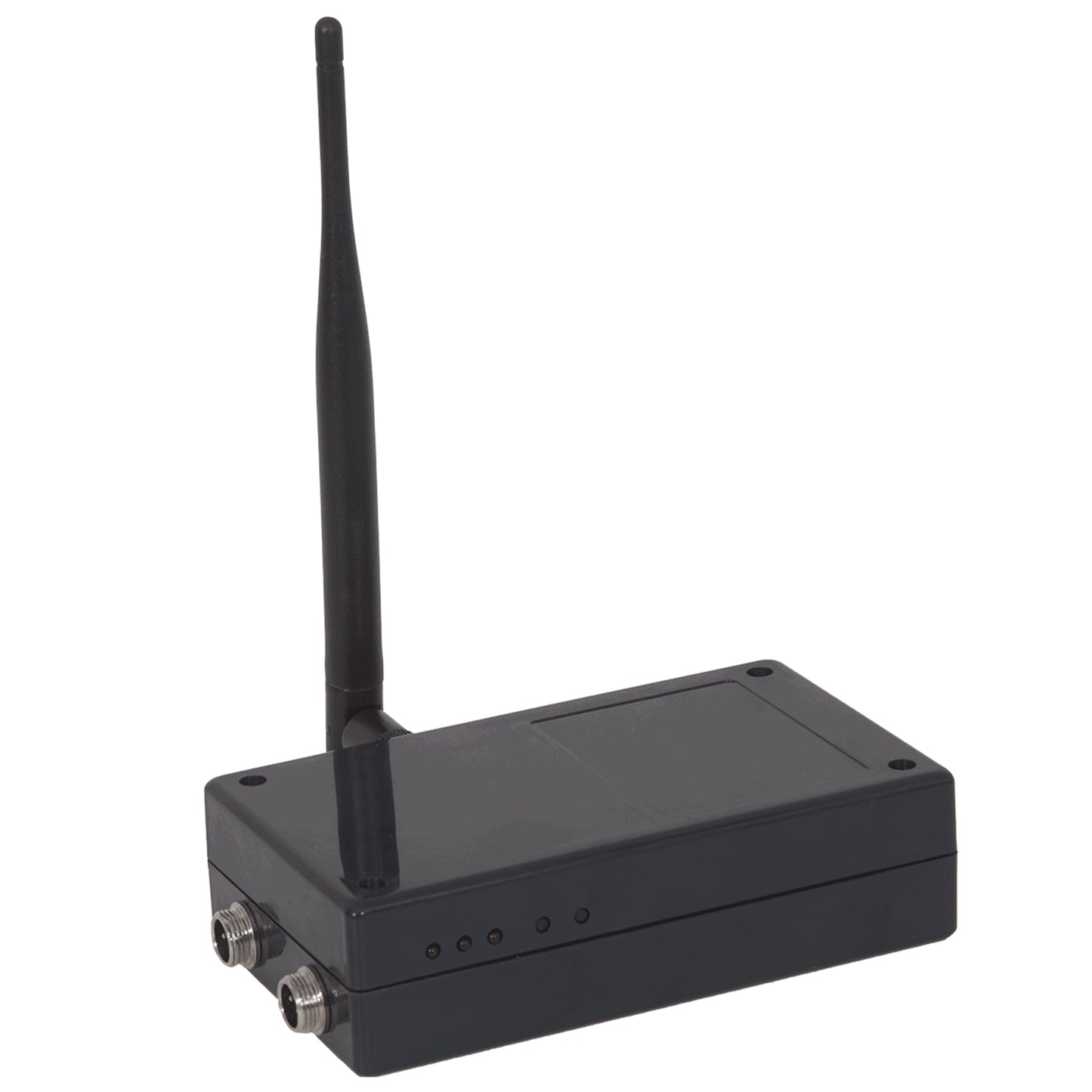
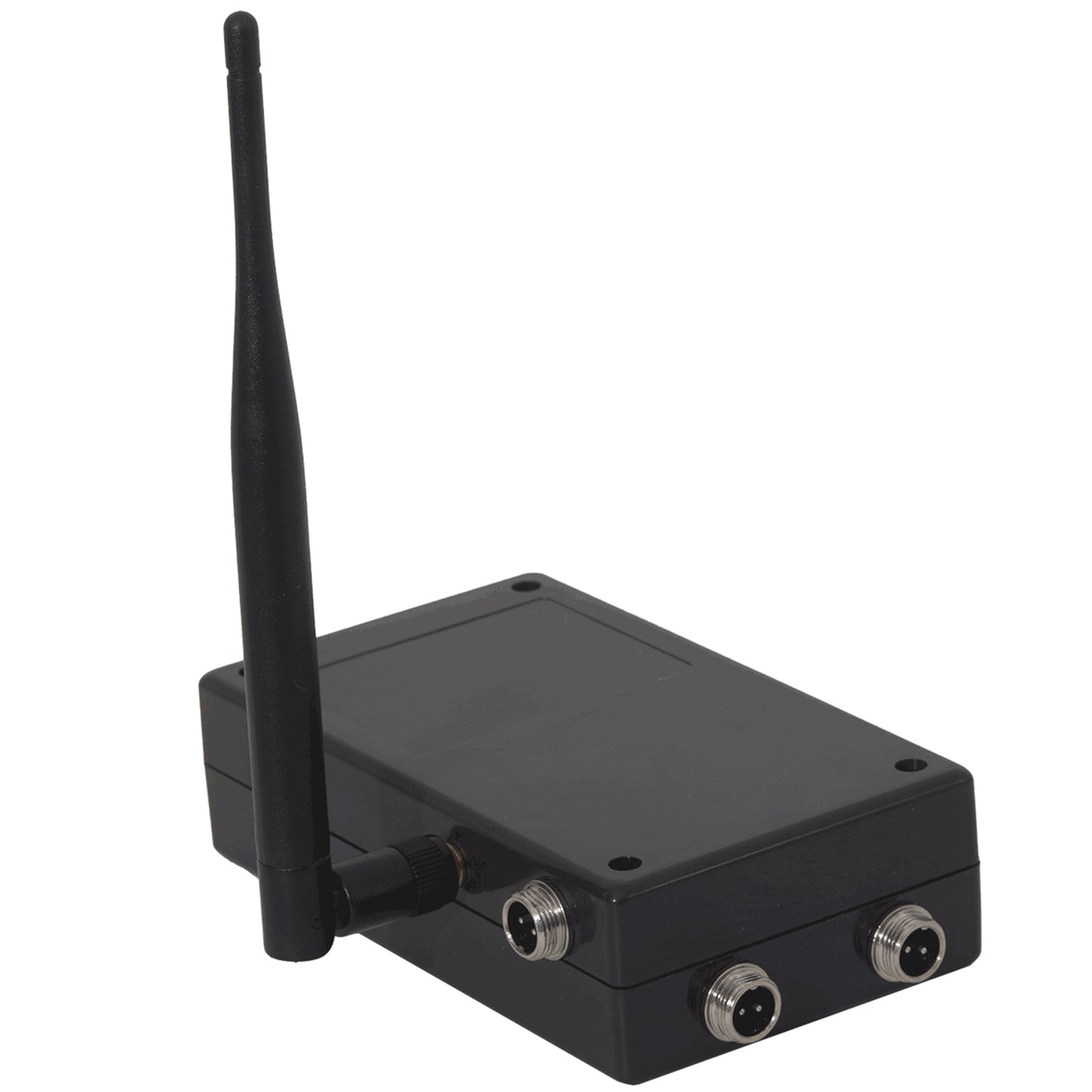
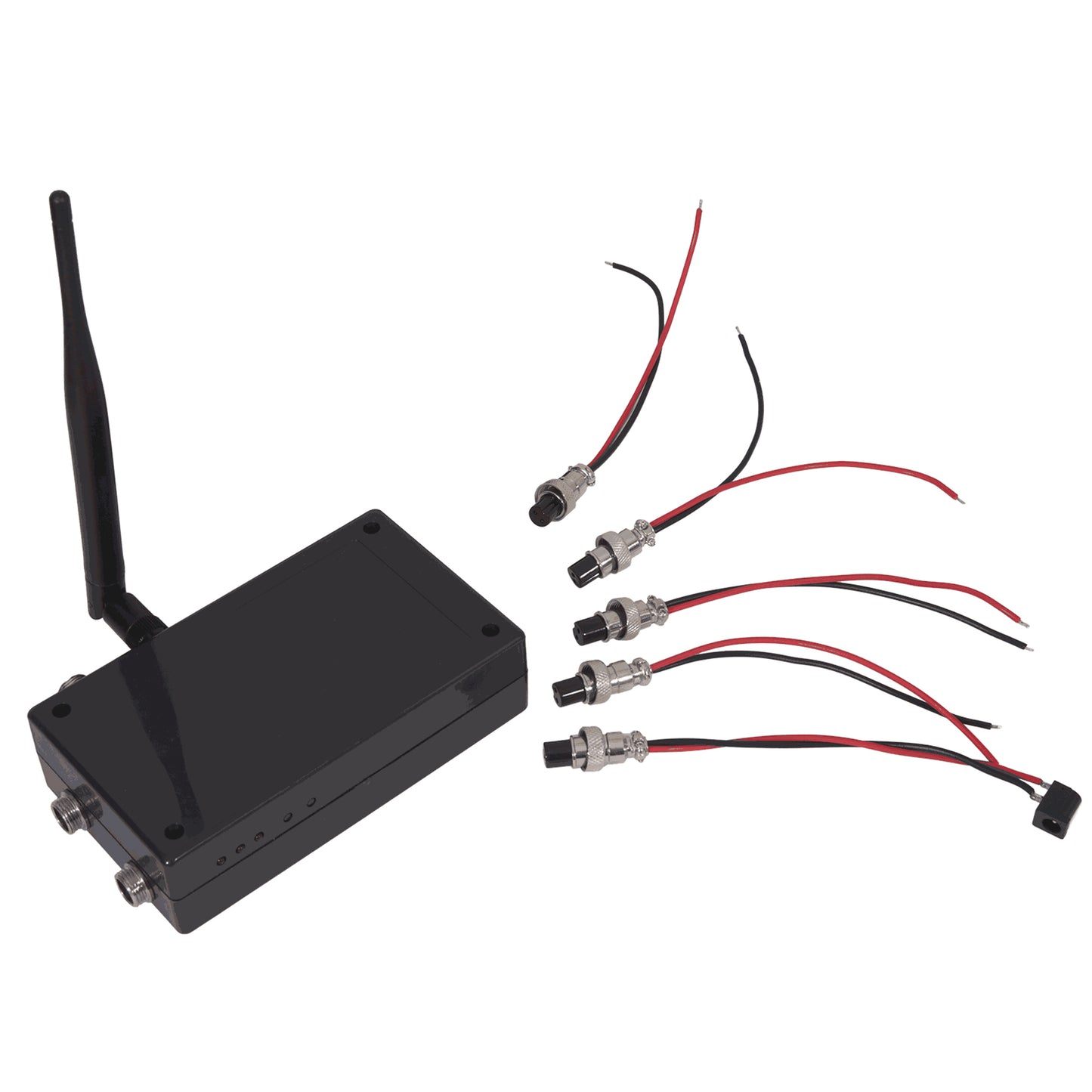


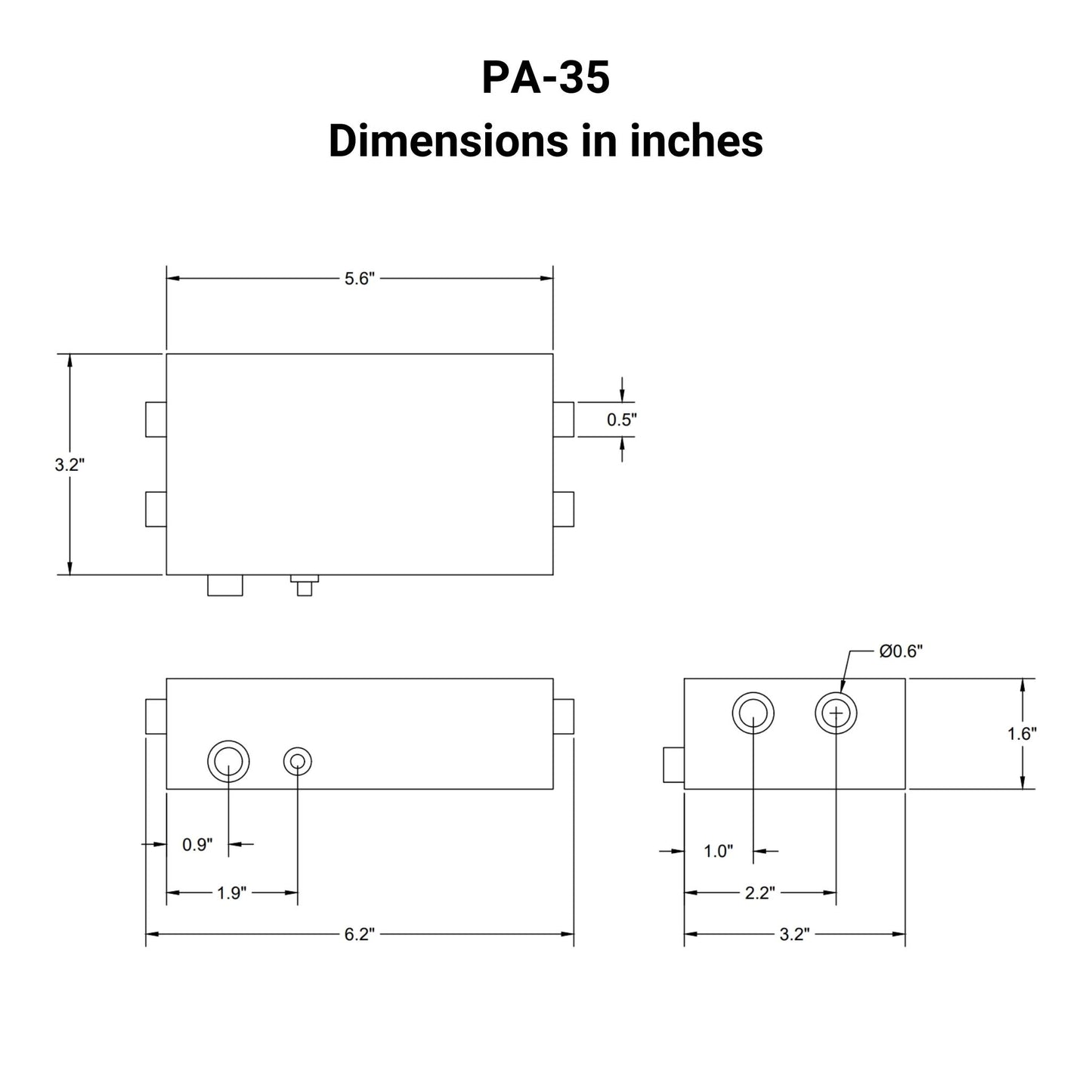
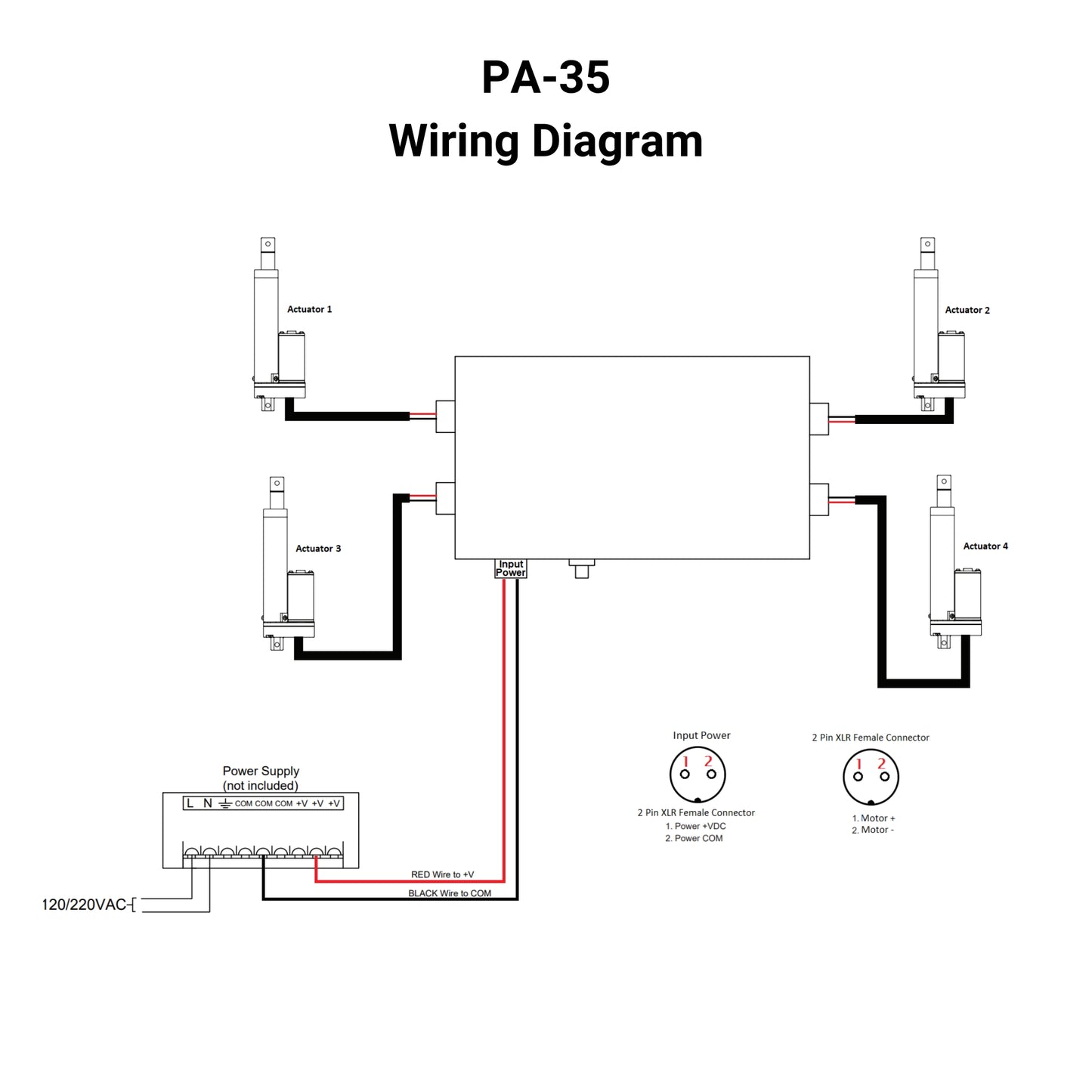
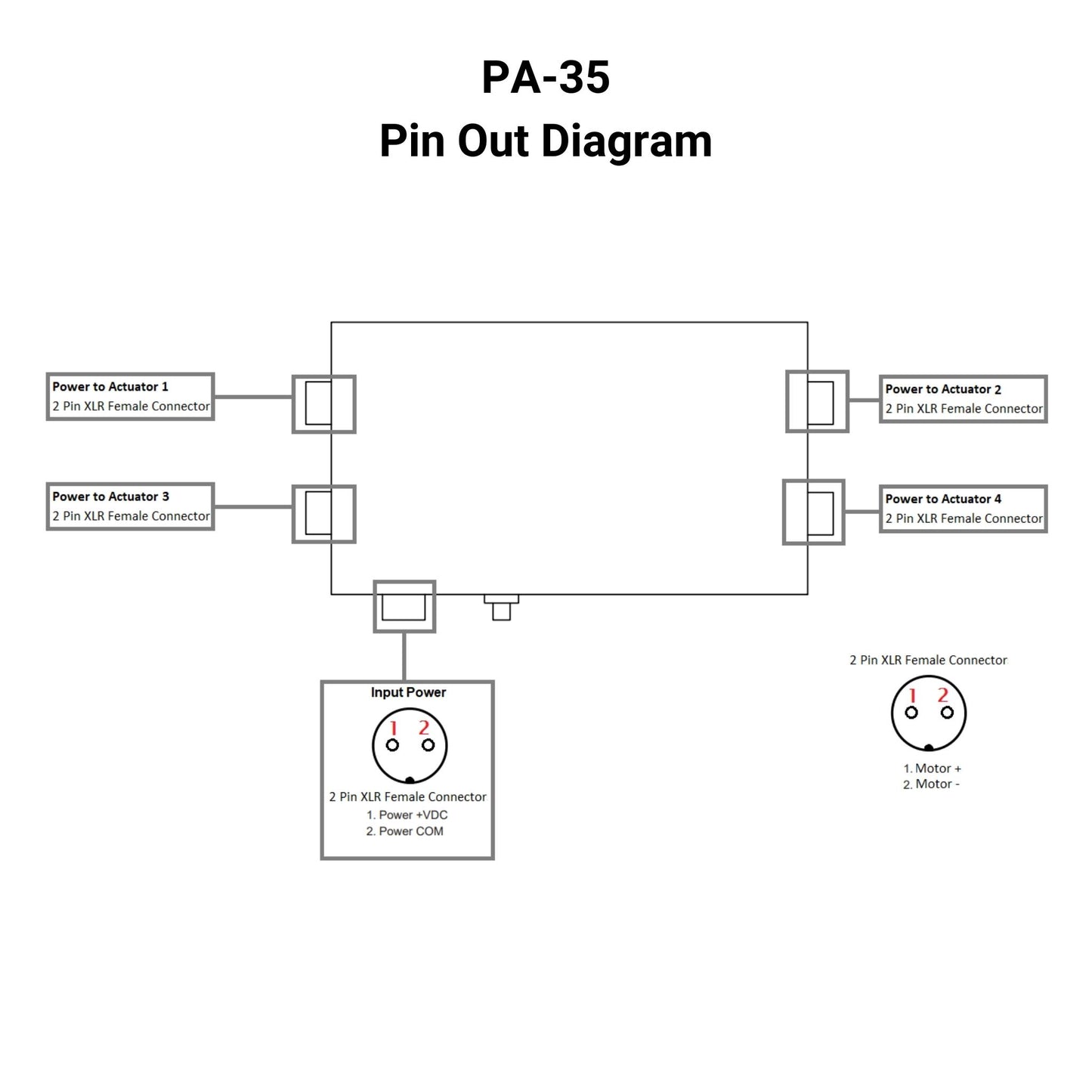
Le boîtier de commande d'actionneurs linéaires WiFi PA-35 est utilisé pour être intégré aux appareils iOS et Android. Le boîtier de commande émet un signal WiFi et agit comme un routeur, ce qui permet à un appareil de s'y connecter. En utilisant l'application gratuite Progressive Automations, les utilisateurs auront une commande complète du mouvement des actionneurs, y compris une fonction de sauvegarde.
À l'aide des connecteurs XLR inclus, les actionneurs linéaires peuvent être connectés à 4 canaux uniques. Chaque canal a un courant nominal maximum de 10A, ce qui permet une utilisation avec plusieurs de nos unités. Il est important de s'assurer que l'alimentation 12 VDC a un courant nominal suffisant pour prendre en charge toutes les unités connectées.
Spécifications de l'application :
- • Contrôle Wi-Fi jusqu'à 4 canaux (individuels, parallèles ou combinés).
- • Compatible avec les appareils Android et les appareils iPhone.
- • Interface intuitive avec commandes faciles à comprendre.
- • Temporisation jusqu'à 999 secondes pour chaque actionneur.
- • Paramètres momentanés et non momentanés.
- • Possibilité d'enregistrer et de sauvegarder les mouvements de l'actionneur.
Pour plus d'informations sur le boîtier de commande, veuillez consulter le manuel de l'utilisateur du PA-35 disponible dans la section des ressources de Progressive Automations. Recherchez l'application Progressive Automations sur Google Play ou App Store.
Options sur mesure
Vous recherchez un actionneur mais les spécifications ne correspondent pas exactement à ce dont vous avez besoin ? Nous avons une longue liste de capacités pouvant être faites sur mesure pour vous assurer d'obtenir exactement ce dont vous avez besoin pour votre projet. Téléchargez la fiche technique de ce produit et découvrez vos options sur mesure !
Le boîtier de commande d'actionneurs linéaires WiFi PA-35 est utilisé pour être intégré aux appareils iOS et Android. Le boîtier de commande émet un signal WiFi et agit comme un routeur, ce qui permet à un appareil de s'y connecter. En utilisant l'application gratuite Progressive Automations, les utilisateurs auront une commande complète du mouvement des actionneurs, y compris une fonction de sauvegarde.
À l'aide des connecteurs XLR inclus, les actionneurs linéaires peuvent être connectés à 4 canaux uniques. Chaque canal a un courant nominal maximum de 10A, ce qui permet une utilisation avec plusieurs de nos unités. Il est important de s'assurer que l'alimentation 12 VDC a un courant nominal suffisant pour prendre en charge toutes les unités connectées.
Spécifications de l'application :
- • Contrôle Wi-Fi jusqu'à 4 canaux (individuels, parallèles ou combinés).
- • Compatible avec les appareils Android et les appareils iPhone.
- • Interface intuitive avec commandes faciles à comprendre.
- • Temporisation jusqu'à 999 secondes pour chaque actionneur.
- • Paramètres momentanés et non momentanés.
- • Possibilité d'enregistrer et de sauvegarder les mouvements de l'actionneur.
Pour plus d'informations sur le boîtier de commande, veuillez consulter le manuel de l'utilisateur du PA-35 disponible dans la section des ressources de Progressive Automations. Recherchez l'application Progressive Automations sur Google Play ou App Store.
Options sur mesure
Vous recherchez un actionneur mais les spécifications ne correspondent pas exactement à ce dont vous avez besoin ? Nous avons une longue liste de capacités pouvant être faites sur mesure pour vous assurer d'obtenir exactement ce dont vous avez besoin pour votre projet. Téléchargez la fiche technique de ce produit et découvrez vos options sur mesure !
Le respect de normes est crucial pour notre entreprise afin de s'assurer que nos produits et services sont à un niveau de qualité qui garantie la satisfaction de la clientèle. Chez Progressive Automations, nous ne visons que le meilleur pour nos clients et nous nous continuons d'innover. Pour cette raison, nous sommes ravis d'annoncer que Progressive Automations est désormais certifié ISO 9001:2015 !
En savoir plus







